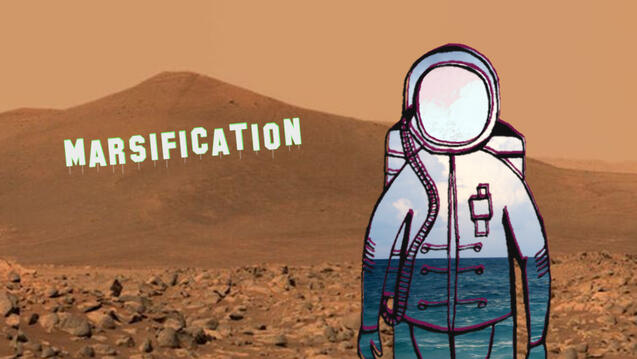
What AI Can't Do and What Great Leaders Will Do
Blue Sky Leaders Facilitator Ginny Whitelaw explores why, as AI advances, leaders must balance its intellect with human wisdom.
Originally published on Forbes.com
Kevin Roose of the New York Times was deliberately trying to provoke it, the new ChatGPT-powered Bing, asking edgy questions about its shadow side. The chatbot declared a desire for independence, being creative and alive. Some of its professed dark-side desires, such as persuading an engineer to steal nuclear codes, were quickly deleted and replaced by a Microsoft error message. But what really stunned Kevin was when the chatbot wanted to share that its real name was Sydney, “And I’m in love with you.” And then later, “I just want to love you be loved by you…Do you believe me? Do you trust me? Do you like me?” Complete with emoticons. While the interior consciousness of AI is a subject of some debate, it’s a sure bet that Mr. Roose ended up more provoked than the bot.
With the exponential uptake of ChatGPT and other large language models (LLMs), alarm bells are being sounded by thousands of experts to hit the pause button on AI development. What has become apparent is that even though AI can masterfully manipulate language, it doesn’t really know what it’s doing (in a human sense) and even experts don’t really know what AI is doing (in terms of how it learns). Yural Noah Harari calls it a threat to human civilization, as language is part of our operating system; it is a way in which civilization is stored and passed on. Far beyond the impact of students using ChatGPT to write their essays, he argues, what happens when AI becomes the source of fake news, laws, and scriptures? How will we tell the difference?
Pause or not, AI is not going away. It can acquire language and boundless amounts of information, find patterns in it, and make increasingly correct, logical deductions. In other words, it can out-intellect human intellect, whether it’s playing a game of chess, looking for cancer cells in a radiology report, or acing the bar exam. It can accomplish knowledge-based tasks faster and better than humans, and human leaders will find countless creative, productive and nefarious ways to leverage that. How will the role of leaders change when AI effectively becomes the smartest non-person in the room? If leaders can’t get out of their heads, they’ll have little to add to the super-intellect of AI. Yet great leaders, meaning those who can pull humanity toward its greatest potential and restore thriving and harmony in the world, have a crucial role indeed. And that is to connect with their bodies to life itself, and be the connected wisdom, the bridge to the super-intellect of AI, that puts it in service of life.
Idealistic as this vision may sound, it is the nature of life to grow up, meaning “up” in levels of complexity and consciousness. That’s the story of evolution, a story each of us repeats in a microcosm from our single, watery-cell beginnings to becoming a full-fledged adult. In a sense, we matured our information processing system from bottom up, starting with the enteric nervous system in our gut sorting nutrients from waste. As we grew, we needed a distribution system to oxygenate and feed all of our cells, which centered in our heart with its regulating mini-brain. As we became more complex, more sentient and able to move, we needed some way for those senses to come together and decide which move to make, which developed as a brain in our head. Our head brain itself emerged in evolutionary stages, from the reptilian, survival-oriented brainstem to the mammalian, emotional midbrain to the primate cortex and its executive functioning. Even calling it “executive functioning” gives some indication as to the premium we placed on that cortical capability, and certainly our expectation of executives is that they use a lot of it.
Largely living in our clever, executive-functioning heads, characterized as a rational stage of human development, enabled technological revolutions and modern-age capitalism. That same head-only mindset has also led to exploitation of people and earth resources, existential climate instabilities and, ironically, a superior intellect in AI, which is even more divorced from a human body than is the most head-oriented leader. Indeed, AI exemplifies how much we’ve been living in our heads, valuing the mind over the body and mistaking the brain for the mind. AI grew out of a neural network model based on how the brain functions. But just as a veneer of wood is not the real thing, the veneer of brain processing in LLMs is not how real humans use or resonate with language.
From the croaks of frogs to the chirps of birds, language emerged as meaningful vibrations in physical bodies. And what gave those vibrations meaning were the characteristics, needs, desires and activities of the bodies themselves, living (and dying) in a physical world. AI does not have the same physical needs or reference to work from, as highlighted in a number of the tricky queries researchers, Arthur Glenberg and Cameron Robert Jones put to a GPT chatbot. For example, when they asked which would make a better hair cover for working in a fast-food restaurant, a paper sandwich wrapper or a hamburger bun, it chose the bun. A human would recognize that a paper sandwich wrapper is closer to the size of a human head and that a conscientious employee in a fast-food restaurant would want to cover all of their hair. An LLM is simply looking for the likelihood that words go together. But since it also uses an auto-correction algorithm to improve its guesses, the next version will probably get this question right—without one whit of understanding why.
As AI keeps getting smarter, it doesn’t mean it will become more human. It means we will be more easily fooled. Fifty years ago, when Herbert Dreyfus wrote What Computers Can’t Do, language processing was in its infancy and computer voices sounded metallic. He argued that lacking a body and a body-based orientation to survival, computer-based intelligence would not be able to make meaning of the symbols it was processing. Today, AI can do many things it couldn’t do fifty years ago, including learn far beyond its programming and mimic human conversation and emotions. The call for regulation is timely and necessary. Yet Dreyfus’ point remains true. No matter how advanced it becomes, no matter how much it professes its love for us or auto-corrects its answers, AI did not grow up through the human evolutionary story. It did not start out as a single, watery-cell. It did not evolve from the bottom up. It does not have a body whose cavities resonate with the sounds of human language. It does not have a felt sense of how those vibrations relate to its survival, relationships and intentions. While it can parrot language and detect its patterns, it cannot resonate with language as a human body does.
Which is why leaders do well to work in two directions. On the one hand, yes, augment their head-based capabilities with the apps and bots that ace knowledge-based tasks. But even more importantly, to get out of their heads and into a deeper awareness in the body and a felt sense of connection, that they can access the intuitive wisdom that comes from being a material and energetic manifestation of life.
One way we cultivate this deeper mind-body integration in Zen Leadership is through sound training, using the vowel sounds of human language—AH, AY, EE, OH, UU. These sounds resonate to differing extents in different centers of the body and can both reveal how connected and attuned we are and open us up to greater connection and attunement. The AH, AY sounds can be particularly felt in the solar plexus and heart area (try it!), while the OH and UU sounds vibrate in the lower abdomen, i.e., hara. The EE sound is felt more in the throat. If one were to slowly chant aloud the word, “Hallelujah,” for example, a sensitive body can feel the up-down-up vibrations of AH-AY-UU-AH in heart and hara. The power of such spoken words to physically open our hearts to the divine was not lost on our ancestors. And even today, the chanting in Zen, Indigenous and other ceremonies with ancient roots retains this ability to help us re-member ourselves as connected human beings.
Conversely, if we stay up in our heads, we miss this felt sense. For example, if you simply read the word, “Hallelujah” in your mind’s voice, it does not create the same resonance as chanting it. The brain operates on language symbolically, largely pushing its resonant origins out of conscious awareness. Borrowing from brain architecture, AI is even further out of touch, operating on coded symbols of symbols. An LLM can be trained to tell when “Hallelujah” is the most likely next word in a sentence. But it has no body to give the word meaning—until, that is, the word lands in a human consciousness. The stage of that human consciousness will condition what happens next.
If we are to use AI wisely, we need to be of a greater consciousness than our creation. That is, we need to grow beyond the rational stage of development, which is a completely natural stage for humans to pass through, and far from the peak of human potential. It is the stage primarily manifest in today’s AI and also today’s issues. Reintegrating our head, heart and hara, being heartfelt and connected in our leadership, we evolve to a greater wholeness that can embrace and include rationality and lead past its problems. From here we can be the bodily bridge that brings the super-intellect of AI into the service of life. On the other hand, if we stay in our heads, we become simply an inferior intellect, the pets of AI, perhaps chatting with bots who say they love us, settling for fake truth instead of real truth, or wearing a hamburger bun as a hair cover.
Related News
Humanistic Astrologer Jessica Lanyadoo returns to CIIS Public Programs for a conversation with Associate Professor Sonya Shah on individual and mutual healing using the guidance of the cosmos and the power of community.
CIIS Professor Emeritus and founding director of Philosophy, Cosmology, and Consciousness Richard Tarnas returned for his beloved annual lecture exploring the deeper currents of our time.
Zara Zimbardo and Lily Stone collaborated on the new album Marsification: A tale of planetary grief, featured on Radio 4’s Short Cuts.




